Perched on France’s rugged northern coast, Saint-Malo is more than just a seaside destination—it’s a fortress city steeped in pirate legend, maritime tradition, and irresistible Breton flavors. Known as “The Corsair City,” Saint-Malo was once home to privateers who defended the French crown while plundering enemy ships. Today, its walled old town, dramatic tides, and romantic seafront make it one of Brittany’s most captivating travel spots.
This guide uncovers everything from historic landmarks and local delicacies to shopping streets, nightlife, and scenic walks, helping you plan an unforgettable visit.
Top Landmarks in Saint-Malo
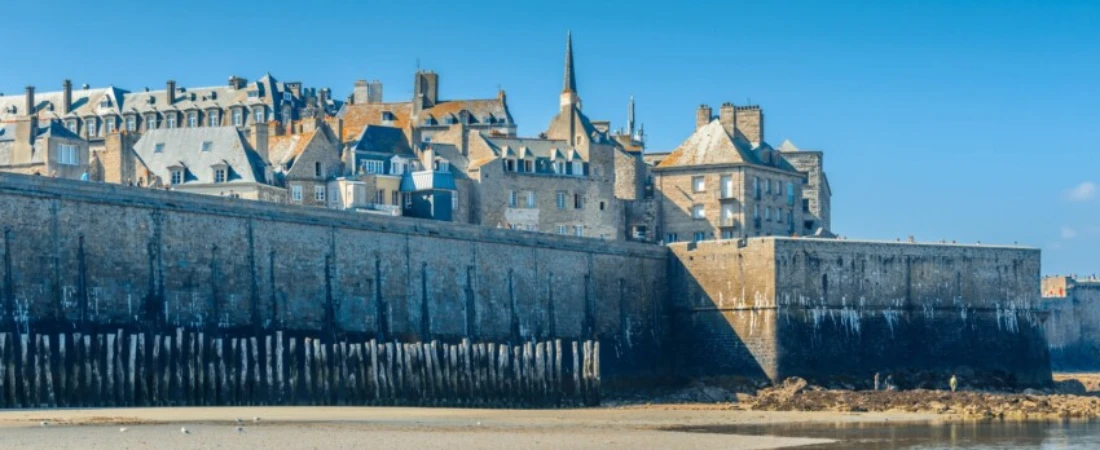
Saint-Malo is a treasure chest of granite fortresses, tide-washed islands, and restored 18th-century streets. Each landmark tells a story — of corsairs, explorers, soldiers, and writers. Below are 10 essential landmarks, each described in depth to help you plan your visit.
The Ramparts of Saint-Malo
Address: Accessible from multiple gates — main entry at Porte Saint-Vincent, 35400 Saint-Malo.
What to See: The ramparts encircling Intra-Muros (the old walled town) stretch for nearly two kilometers and offer panoramic views of the harbor, beaches, and offshore forts. Built from the 12th to the 18th centuries, these granite walls were expanded by architect Garangeau under Louis XIV to make the city impregnable to British attack.
Visitor Tips:
- Walk the full circuit in the morning to avoid crowds.
- Along the way, you’ll find plaques honoring corsairs, old cannon placements, and viewing platforms.
- Sunset over the Plage du Sillon is spectacular from the northern walls.
- The walk is free, open year-round, and accessible from stairs or ramps at several city gates.
Saint-Malo Cathedral (Cathédrale Saint-Vincent-de-Saragosse)
Address: 12 Rue Saint-Vincent, 35400 Saint-Malo.
This Gothic-Romanesque cathedral is the spiritual heart of Saint-Malo. Built beginning in the 12th century, it has been rebuilt multiple times after war damage, most recently after World War II. Its stained-glass windows narrate the city’s seafaring and religious history.
Highlights:
- The tomb of Jacques Cartier, discoverer of Canada, lies inside.
- Marvel at the Rose Window depicting maritime themes.
- The organ and acoustics are renowned; catch a recital if available.
Traveler Tip: Dress modestly when visiting — it’s an active place of worship. Free entry, donations welcome.
Fort National
Address: Accessible at low tide from Plage de l’Éventail, 35400 Saint-Malo.
Built in 1689 by the great military engineer Vauban, Fort National guarded Saint-Malo against English naval attacks. The fortress is perched on a tidal island, reachable by foot only at low tide — check tide tables before attempting the crossing.
What to Expect:
- A guided tour explains its role during corsair days and its tragic use as a German prison in WWII.
- Sweeping views back toward the walled city are unmatched.
- Admission fee: modest (~5–7€), cash recommended.
Grand Bé Island
Address: Accessible by foot at low tide from Plage de Bon-Secours, 35400 Saint-Malo.
A serene tidal island famous as the burial place of François-René de Chateaubriand, the Romantic writer who asked to rest here, facing the open sea. The island has no buildings apart from a simple stone marker for Chateaubriand’s grave.
Tips:
- Wear sturdy shoes; the seabed is rocky and slippery.
- Only cross when the tide is fully out — you have about 3 hours to explore safely.
- The quiet atmosphere invites reflection — keep voices low and respect the site.
Petit Bé Fort
Address: Tidal access from Plage de Bon-Secours, 35400 Saint-Malo.
This smaller island fortress (1689) was part of Vauban’s defenses, complementing Fort National. It offers a closer look at 17th-century military engineering with bastions, powder rooms, and thick granite walls. Tours are seasonal, usually open in summer. Entry around 6–8€.
Château de Saint-Malo (Musée d’Histoire de la Ville et du Pays Malouin)
Address: Esplanade Félicité Lamennais, 35400 Saint-Malo.
This imposing granite castle, built by Dukes of Brittany in the 15th century, now houses the History Museum of Saint-Malo. Exhibits cover corsair history, polar exploration (Malouins served with expeditions to Antarctica), and the city’s dramatic WWII destruction and reconstruction.
Key Features:
- Climb the castle towers for elevated views.
- Discover maps, ship models, and artifacts from Jacques Cartier’s voyages.
- Admission ~6–7€. Open year-round but closed Mondays.
Maison du Québec
Address: 2 Rue des Champs Vauverts, 35400 Saint-Malo.
This cultural center celebrates the link between Saint-Malo and Canada, honoring Jacques Cartier’s legacy. Exhibits explain Malouin migration to Quebec and ongoing Franco-Canadian ties. Entry is usually free, and it often hosts temporary exhibitions or cultural events.
Malouinières (Corsair Manor Houses)
Address Example: La Balue, 35430 Saint-Jouan-des-Guérets (just outside Saint-Malo).
These elegant 17th–18th century country homes, built by wealthy shipowners, dot the countryside around Saint-Malo. Several are open for guided tours. Inside, you’ll see wood-paneled salons, period furniture, and lush gardens that reflected corsair wealth and taste.
Plage du Sillon (Sillon Beach)
Address: Boulevard Hébert, 35400 Saint-Malo.
The city’s longest beach (over 3 km), Sillon is known for its fine sand and rows of seawalls called brise-lames, which break waves during high tides. It’s perfect for walks, sunbathing, or watching kite surfers. The beach connects Intra-Muros to Paramé district. Free and open access.
Les Bas-Sablons & Solidor Tower
Address: Quai Solidor, 35400 Saint-Malo.
In the Saint-Servan district, Tour Solidor is a 14th-century keep that once controlled access to the Rance estuary. It now houses the Musée des Long-Courriers, dedicated to long-distance sailors and Cape Horn navigators. Nearby Bas-Sablons marina has seafood restaurants and quieter streets than Intra-Muros.
Breton Food & Dining Guide in Saint-Malo
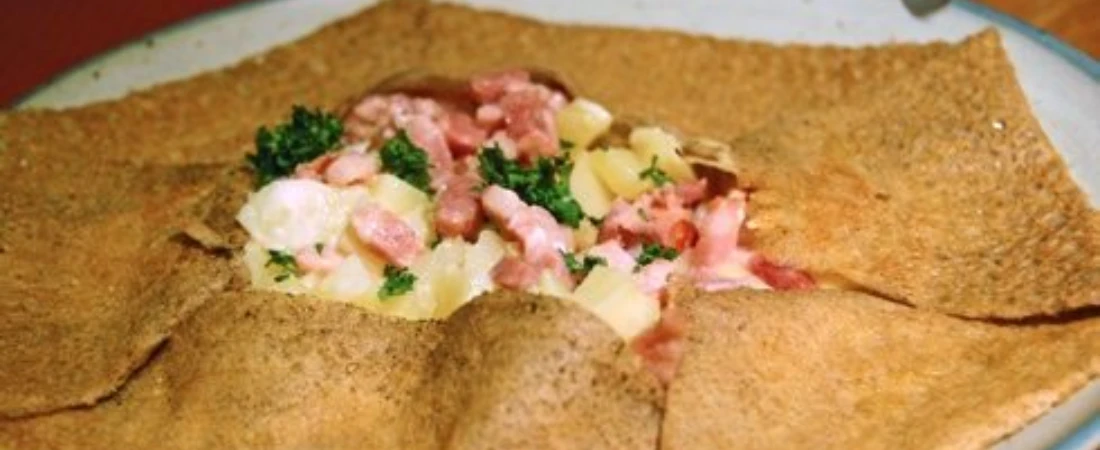
Saint-Malo is a culinary paradise where the sea meets Brittany’s rich farmland. The city’s menus highlight ultra-fresh seafood, buttery pastries, and age-old recipes that have fed sailors and corsairs for centuries. Whether you’re tasting oysters on the harbor or indulging in a warm kouign-amann, food here isn’t just about eating — it’s about living the Breton way of life. Below are 10 essential culinary experiences with full details.
Breton Crêpes and Galettes
Where to Try: Crêperie Le Tournesol – 4 Rue des Cordiers, 35400 Saint-Malo.
In Brittany, galettes are savory buckwheat pancakes (gluten-free) typically filled with ham, cheese, or eggs, while crêpes are sweet wheat-flour pancakes often topped with caramel, fruit, or chocolate.
Why It Matters: These dishes are at the heart of Breton cuisine. Traditionally, families cooked them on large cast-iron griddles called billigs over an open fire.
Tip: Pair your galette with a glass of Breton cider (served in a ceramic bowl rather than a glass).
Oysters of Cancale
Where to Try: Marché aux Huîtres – Port de la Houle, 35260 Cancale (20 min from Saint-Malo).
The bay near Cancale, just east of Saint-Malo, produces some of the finest oysters in France, praised since the time of Louis XIV.
Experience: Buy a dozen fresh oysters directly from local farmers on the pier, squeeze on a lemon, and eat them with a view of Mont-Saint-Michel Bay.
Cost: Around €6–10 for a plate of six. Bring cash.
Kouign-Amann
Where to Try: Boulangerie Grain de Vanille – 6 Place de la Cathédrale, 35400 Saint-Malo.
This legendary Breton cake, whose name means “butter cake” in Breton, is layered pastry caramelized with sugar and salted butter.
History: Originally a simple dessert from Douarnenez, it became a regional icon. Its rich, flaky texture made it perfect for feeding hungry sailors.
Tip: Eat it warm if possible. It’s sweet, heavy, and utterly unforgettable.
Cider and Chouchen
Where to Try: Cidrerie du Corsaire – 15 Rue de Toulouse, 35400 Saint-Malo.
Brittany’s mild climate supports apple orchards producing crisp cider and chouchen, a fermented honey drink with ancient Celtic roots.
Insight: Cider is usually semi-dry (doux), naturally sparkling, and less alcoholic than wine — making it an excellent lunch drink. Chouchen, stronger and sweeter, is more of an evening treat.
Tip: Take home a bottle from an artisan shop. Look for “IGP Cidre de Bretagne” on labels for authentic quality.
Seafood Platters
Where to Try: Restaurant Les Embruns – 120 Chaussée du Sillon, 35400 Saint-Malo.
Saint-Malo’s restaurants serve towers of seafood featuring langoustines, crab, clams, whelks, prawns, and lobster.
Local Secret: Malouins prefer to enjoy these feasts leisurely, usually on weekends.
Cost: A full platter for two runs around €60–90 depending on the season.
Tip: Always ask for local langoustines and “homard breton” (blue lobster).
Salted Butter Caramel (Caramel au Beurre Salé)
Where to Try: Maison Guella – 16 Rue de l’Orme, 35400 Saint-Malo.
Invented in Brittany, this creamy caramel uses fleur de sel (sea salt harvested nearby). It’s sold as spreads, candies, and sauces — a perfect souvenir.
Tip: Buy a small jar and drizzle it over crêpes or ice cream.
Fish and Shellfish at the Marché de Rocabey
Address: Rue Rocabey, 35400 Saint-Malo.
This indoor market, open daily (except Mondays), is a seafood lover’s dream. Stalls brim with scallops (coquilles Saint-Jacques), mussels (moules de bouchot), monkfish, and ray.
Tip: Visit early morning to see fishermen unload their catch. Even if you can’t cook, it’s fascinating to watch how locals shop.
Breton Butter and Sea Salt
Where to Buy: La Maison du Beurre Bordier – 9 Rue de l’Orme, 35400 Saint-Malo.
Jean-Yves Bordier is a legendary butter maker whose hand-kneaded, salted butters are exported worldwide. Flavors include seaweed, smoked salt, and yuzu.
Tip: Buy small portions to take home — they are vacuum packed for travel.
Dining in Intra-Muros vs. the Harbor
Inside the walls (Intra-Muros), restaurants cater heavily to tourists but offer atmospheric dining in medieval streets. Along Quai Duguay-Trouin and Chaussée du Sillon, you’ll find modern brasseries with panoramic sea views.
Tip: For quieter, more local places, head to Saint-Servan or Paramé neighborhoods.
Food Festivals
Saint-Malo hosts several gourmet events:
- La Route du Rock (August): Primarily a music festival, but food trucks serve local specialties.
- Quai des Bulles (October): A comic festival with food stands featuring regional treats.
- Fête de la Coquille Saint-Jacques (April): In nearby Erquy or Paimpol, celebrating scallop season.
These festivals highlight Brittany’s culinary pride and maritime culture.
Culture, History & Maritime Traditions of Saint-Malo
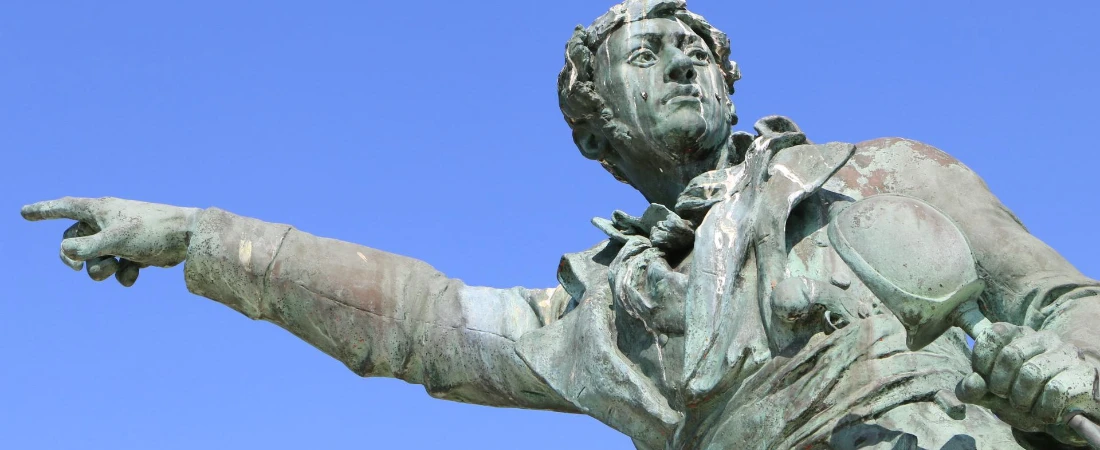
Saint-Malo is not just another seaside resort. For centuries, it was an independent-minded corsair stronghold whose ships ventured as far as Newfoundland and the Indies. Its people — proud Malouins — have cultivated a culture of seafaring courage, entrepreneurial risk, and stubborn self-reliance. Below are 10 cultural and historical pillars of Saint-Malo, explained in depth.
The Spirit of the Corsairs
From the 17th to 18th centuries, Saint-Malo was home to licensed privateers, known as corsaires. Unlike pirates, corsairs operated with royal authorization to seize enemy ships during wartime.
Key Figures:
- René Duguay-Trouin (1673–1736): Captured over 400 ships for France.
- Robert Surcouf (1773–1827): The most famous Malouin corsair, legendary for his naval exploits against British merchant fleets.
Where to Learn: Musée d’Histoire in the Château de Saint-Malo displays ship models, weapons, and letters of marque.
Jacques Cartier – Explorer of Canada
Saint-Malo is the birthplace of Jacques Cartier (1491–1557), who claimed Canada for France after sailing up the Saint Lawrence River in 1534.
Memorials:
- His statue stands on Quai Saint-Vincent.
- Inside Saint-Malo Cathedral, his tomb commemorates his voyages.
Cultural Legacy: Cartier’s explorations opened the door to centuries of French presence in North America.
The Siege of Saint-Malo (1944)
During World War II, Saint-Malo was heavily fortified by the Germans as part of the Atlantic Wall. In August 1944, Allied forces bombed and shelled the city to drive out occupying troops. Nearly 80% of Intra-Muros was destroyed, but the city was painstakingly rebuilt stone by stone after the war.
Tip: Historical plaques along the ramparts explain battle sites and reconstruction efforts.
Chateaubriand – The Romantic Writer
François-René de Chateaubriand (1768–1848), a major figure of French Romanticism, was born in Saint-Malo. He requested to be buried on Grand Bé Island, facing the open sea.
Visit: His grave is marked by a simple cross with no inscription, as he wished to “let the wind and waves write his epitaph.”
Maritime Festivals
Saint-Malo celebrates its seafaring heritage with major maritime events:
- La Route du Rhum (November): A transatlantic solo sailing race from Saint-Malo to Guadeloupe, attracting global attention.
- Étonnants Voyageurs (May): A literary festival drawing travel writers and adventurers.
Tip: Hotels fill up months in advance — book early if visiting during these festivals.
Saint-Malo’s Independent Republic
From 1590 to 1594, during France’s Wars of Religion, Saint-Malo briefly declared itself an independent republic, refusing to recognize either Catholic or Protestant authority until stability returned. Its motto was “Ni Français, ni Breton, Malouin suis” (“Neither French nor Breton, I am Malouin”).
Legacy: This fierce independence still colors local identity today.
Maritime Architecture and Intra-Muros Life
The granite streets of the walled city still reflect Saint-Malo’s maritime prosperity:
- Narrow lanes designed to break Atlantic winds.
- Tall houses with high roofs for ship captains who could see the harbor from their attics.
- Shuttered windows to withstand storms.
Experience: Walk Rue Saint-Vincent and Rue de l’Orme to feel this unique atmosphere.
Polar Exploration Heritage
Saint-Malo sailors joined expeditions to the Arctic and Antarctic. The city honors Commander Jean-Baptiste Charcot and Malouin officers who contributed to polar science. Exhibits at the Château Museum display navigation instruments and expedition journals.
Traditional Music and Breton Language
Saint-Malo is part of Brittany, where Breton culture thrives:
- You may hear Breton language on street signs and during festivals.
- Traditional bagad (pipe and drum bands) often perform during national holidays or cultural gatherings.
Tip: Visit during a summer fest-noz (night dance) in nearby towns to see traditional Breton music and circle dancing.
Daily Life of the Malouins
Despite its fame, Saint-Malo remains a working port. Fishing boats still land scallops and lobsters. Markets hum with locals shopping for Bordier butter and fresh fish. Evening strolls along the ramparts reveal a city proud of its heritage but rooted in everyday life — not just tourism.
Shopping & Local Products in Saint-Malo
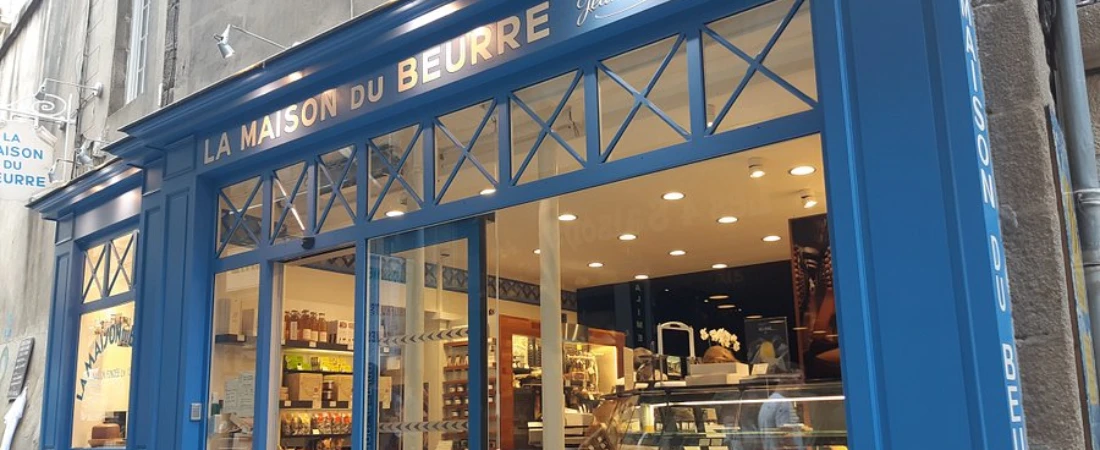
Shopping in Saint-Malo is about more than just buying souvenirs — it’s about immersing yourself in Breton craftsmanship, maritime heritage, and authentic flavors of the Emerald Coast. The city’s boutiques and markets reflect its proud corsair past, its seafaring connections, and its modern creative scene. Below are the 10 most important shopping experiences, explained in depth.
Artisan Boutiques Inside the Walls
Saint-Malo’s Intra-Muros (walled town) is lined with small independent shops, many run by local artisans rather than big retail chains. Streets like Rue de l’Orme, Rue Saint-Vincent, Rue de Dinan, and Rue de Chartres are the best places to browse for handmade pottery, leatherwork, and artwork inspired by the sea.
- What makes it special: Each shop reflects Saint-Malo’s maritime identity — anchors, ships, and Breton symbols often appear in the designs.
- Practical tip: Many stores close for lunch between 12:30 PM and 2 PM. Plan to shop mid-morning or mid-afternoon for the best selection and atmosphere.
Striped Breton Shirts (La Marinière)
The Breton striped shirt, or marinière, is one of France’s most recognizable garments. Originally a uniform for French navy sailors, it became popular with Saint-Malo’s fishermen and corsairs.
- Where to buy: Armor Lux Boutique, 3 Rue Porcon de la Barbinais, 35400 Saint-Malo. Other local shops also carry authentic versions.
- Why it’s iconic: The traditional shirt has 21 navy stripes — one for each of Napoleon’s victories.
- Insider note: Look for heavyweight cotton versions with proper finishing at the collar and cuffs. Tourist knockoffs are thinner and fade quickly.
Bordier Butter – Saint-Malo’s Culinary Jewel
Jean-Yves Bordier, a master butter maker, has his flagship shop at 9 Rue de l’Orme, Intra-Muros.
- Specialties: Hand-churned butter with unique flavors like seaweed, smoked salt, yuzu, or vanilla.
- Why it’s unique: Unlike mass-produced butter, Bordier butter is kneaded and matured for perfect texture and taste.
- Buying tip: Ask for travel-ready packs. They’ll wrap it so it stays cold for a few hours — perfect if you’re heading home.
Salted Caramel and Brittany Sea Salt Products
Saint-Malo is famous for caramel au beurre salé — soft caramel made with salted butter and fleur de sel from nearby Guérande marshes.
- Where to buy: Maison Guella, 16 Rue de l’Orme, is one of the oldest sweet shops in Saint-Malo.
- What to try: Salted caramel candies, spreads, and biscuits (galettes bretonnes).
- Why it’s special: Breton sea salt is naturally rich in minerals, giving a distinctive flavor compared to refined table salt.
Independent Bookshops & Maritime Literature
Saint-Malo is home to Étonnants Voyageurs, a major literary festival. Local bookshops reflect the city’s love for travel writing and maritime tales.
- Top shop: Librairie Le Porte Plume, 8 Rue Saint-Vincent, specializes in Breton legends, corsair biographies, and nautical charts.
- Cultural tip: Many books are in French, but some have English editions. Ask the shopkeeper for recommendations about Jacques Cartier or Surcouf.
Nautical Antiques & Home Décor
Want to bring home a piece of Saint-Malo’s corsair heritage? Look for antique shops selling model ships, brass compasses, vintage maps, and rope artwork.
- Best streets: Rue de Dinan and Rue des Cordiers.
- What to look for: Authentic marine instruments or locally made decorative pieces.
- Why it matters: These items reflect Saint-Malo’s centuries-long relationship with the sea.
Gourmet Grocery Shops
Saint-Malo’s delicatessens carry cider, chouchen (honey wine), Breton biscuits, and canned seafood such as mackerel and sardines.
- Must-visit: L’Atelier de l’Huître, 15 Rue Broussais, where you’ll find high-quality canned oysters and scallops.
- Gift tip: Look for products packaged in decorative tins featuring corsair ships — they make great kitchen souvenirs.
Local Markets for Everyday Flavors
Two main markets bring Saint-Malo’s culinary life alive:
- Marché de Rocabey (Rue Rocabey): Open daily except Monday — ideal for fresh fish, vegetables, and Bordier butter at local prices.
- Marché de Saint-Servan (Place Bouvet): A traditional open-air market with cheese, charcuterie, and artisanal breads.
- Practical advice: Arrive early (8–10 AM) when products are freshest and stalls are fully stocked.
Breton Jewelry & Celtic Symbolism
Saint-Malo jewelers create silver and gold pendants, rings, and bracelets featuring Breton motifs such as:
- Triskell (three-spiral symbol): Represents unity of land, sea, and sky.
- Hermines (ermine): A heraldic emblem of Brittany.
- Where to shop: Artisan jewelers along Rue Saint-Vincent and Rue de Dinan.
- Why it’s meaningful: These pieces are not generic souvenirs — they represent Brittany’s ancient Celtic roots.
Souvenirs with Real Stories
Avoid mass-produced trinkets and look for artisan-made pottery, photography prints, soaps enriched with seaweed, and locally crafted candles.
- Where to find them: Boutiques around Place Chateaubriand and Rue du Pélicot.
- Cultural insight: Many makers are happy to explain their craft, whether it’s hand-glazing ceramics or sourcing natural Breton ingredients.
Practical Shopping Tips
- Payment: Most shops accept cards, but markets prefer cash.
- VAT Refund: Tourists from outside the EU may qualify for tax-free shopping over a certain amount.
- Shipping: Many boutiques offer worldwide shipping for larger items like antiques.
- Timing: Shops generally open around 10 AM and close by 7 PM. Intra-Muros is busiest on weekends when cruise passengers visit.
Nightlife & Entertainment in Saint-Malo
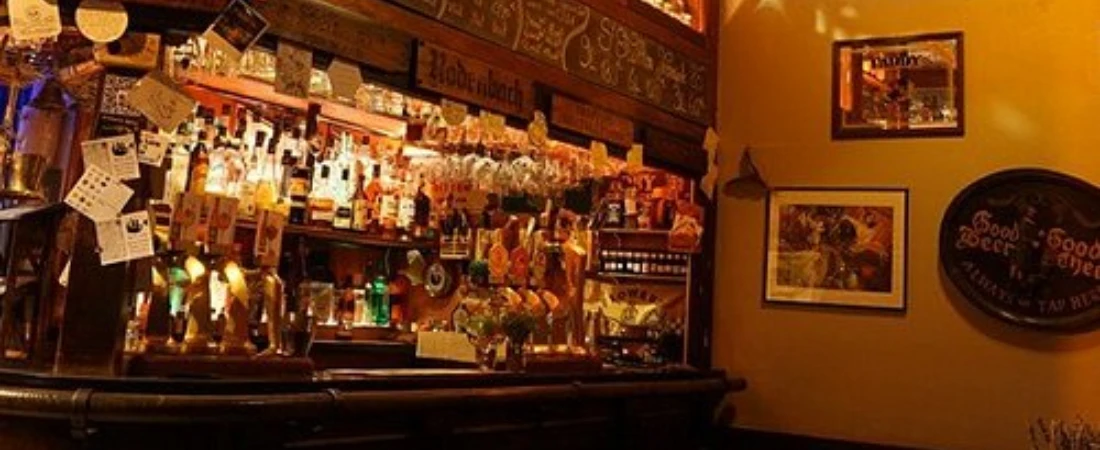
When the sun sets over Saint-Malo’s ramparts, the city takes on a different charm. The medieval walls glow under lanterns, the tide rolls out to expose wide stretches of sand, and the Intra-Muros lanes come alive with cozy pubs, wine bars, and seafood restaurants. Saint-Malo is not a loud clubbing city — it offers a refined nightlife with harbor views, live music, and an easy mix of locals and travelers.
Evening Stroll on the Ramparts
Before heading into any bar or restaurant, start your night with a walk along the ramparts that circle Intra-Muros.
- Location: Access from Porte Saint-Vincent or Porte Saint-Thomas.
- Why it’s magical: Sunset and night views over the harbor and ocean are breathtaking.
- Tip: The full circuit takes about 20 minutes — bring a light jacket, as sea breezes can be cool even in summer.
Harbor-View Pubs at Quai Saint-Vincent
The harbor area offers pub-style bars that are lively but not overwhelming.
- Popular spots: La Belle Époque (7 Quai Saint-Vincent) and Le Cancalais (3 Quai Saint-Vincent).
- Atmosphere: Wooden interiors, maritime décor, and outdoor seating in warmer months.
- What to drink: Try a glass of local Breton cider or chouchen (honey wine).
Seafood Restaurants with Night Service
Saint-Malo is famous for its oysters, mussels, and scallops, and many restaurants serve until late evening.
Top choices:
- Le Chalut (8 Rue de la Corne de Cerf) — Michelin-starred seafood.
- La Cale (6 Rue de Dinan) — informal, great for shellfish platters.
Booking tip: Reserve earlier in the day, especially on weekends or during sailing festivals.
Beach Bars at Plage du Sillon (Summer Only)
During summer, Plage du Sillon, Saint-Malo’s long sandy beach, hosts temporary pop-up bars and lounges.
- Vibe: Casual, barefoot atmosphere with beanbags and live DJs.
- Where to go: Look near the north end of the beach by the Thermes Marins spa complex.
- Why it’s special: Watching the tide go out under the stars with music in the background is pure Saint-Malo.
Live Music at Irish Pubs
Intra-Muros has several Irish- or Breton-themed pubs offering folk music, sea shanties, or acoustic rock sets on weekends.
- Try: La Java (4 Rue Jacques Cartier) and L’Univers (2 Place Chateaubriand).
- Local touch: Some nights feature bagad (Breton bagpipe bands), blending Celtic tradition with pub energy.
Wine & Cocktail Bars
For a quieter night, Saint-Malo’s wine bars offer excellent selections of Loire and Breton wines.
- Top pick: Le Lion d’Or (2 Rue de la Corne de Cerf) — elegant lounge for cocktails and fine wine.
- What to order: Muscadet (local white wine) pairs well with seafood tapas.
Casino Barrière
Looking for late-night entertainment? Casino Barrière de Saint-Malo combines gaming with dining and music.
- Address: 2 Chaussée du Sillon, 35400 Saint-Malo.
- What to expect: Slot machines, table games, and occasional live shows.
- Dress code: Smart casual — not overly formal, but no beachwear.
Theater and Cultural Nights
For a cultural evening, check events at La Nouvelle Vague (Rue des Acadiens) — Saint-Malo’s performing arts venue.
- What’s on: Concerts, dance performances, and contemporary theater.
- Insider tip: Tickets often sell out early, so book in advance if a big artist or Breton music festival is scheduled.
Night Photography on the Tidal Flats
For a different kind of nightlife, photographers love to capture moonlit tides and the illuminated ramparts at low tide.
- Where to shoot: Grand Bé Island causeway or Fort National (accessible only during low tide).
- Practical note: Bring a flashlight and check tide tables to avoid getting stranded — the sea comes in quickly.
Relaxed Hotel Lounges
If you prefer a more low-key evening, Saint-Malo’s top hotels have elegant lounges:
- Hôtel des Abers (10 Rue de la Corne de Cerf) — intimate setting for an after-dinner digestif.
- Grand Hôtel des Thermes (100 Boulevard Hébert) — oceanfront terrace, ideal for a nightcap with a view.
- Why it’s appealing: Quiet, sophisticated atmosphere away from crowded bars.
Practical Nightlife Tips
- Safety: Saint-Malo is generally safe at night, but streets can be slippery in rainy weather — wear good shoes.
- Transportation: Intra-Muros is walkable, but if staying outside the walls, taxis are available until late evening.
- Tides: If visiting beach bars or walking on sand at night, always check tide times — Saint-Malo’s tidal range is among the highest in Europe.
Nature, Beaches & Outdoor Activities in Saint-Malo
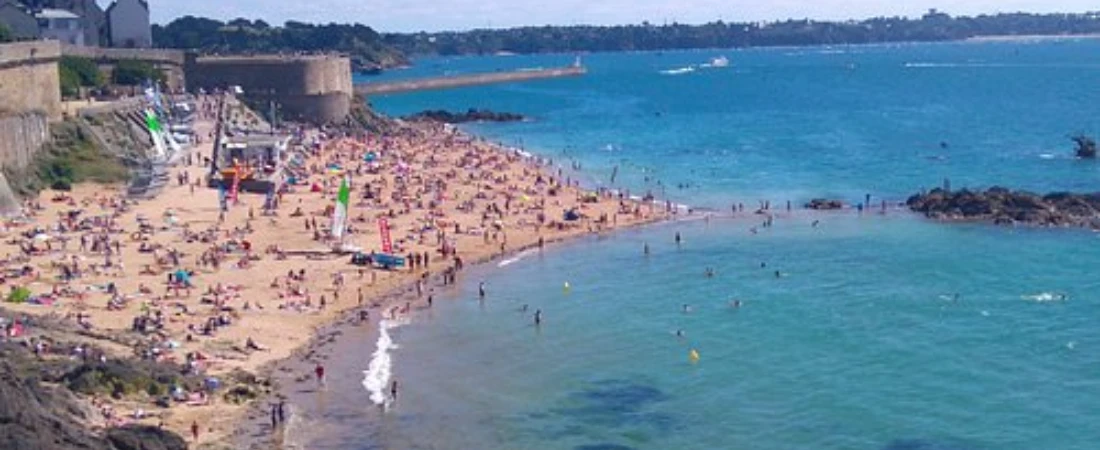
Saint-Malo is not just a walled corsair town — it’s also a gateway to wild coasts, sweeping sandy beaches, and tidal islands. The Emerald Coast (Côte d’Émeraude) lives up to its name, offering dramatic seascapes, vibrant marine life, and some of the highest tides in Europe. Whether you enjoy coastal walks, beach sports, or peaceful picnics on tidal islands, Saint-Malo delivers outdoor experiences for every traveler.
Plage du Sillon – Saint-Malo’s Longest Beach
- Location: Runs parallel to Chaussée du Sillon, starting near the walled town and stretching over 3 km toward Paramé.
- Highlights: Fine golden sand, beach clubs in summer, and breathtaking sunsets.
- Activities: Kite flying, jogging, sand yachting during low tide.
Tip: The beach changes dramatically with tides — at low tide, it’s vast and perfect for walking; at high tide, waves can reach the seawall.
Grand Bé Island – A Tidal Escape
- Access: Walk from Bon-Secours Beach at low tide (check tide tables carefully).
- Why visit: Site of writer Chateaubriand’s tomb, with stunning views of the ramparts and Fort National.
- Experience: Quiet, wind-swept island perfect for reflection or photography.
- Warning: The sea returns quickly — allow plenty of time to get back safely.
Petit Bé and Fort du Petit Bé
- Location: Beyond Grand Bé, accessible only at very low tides.
- What’s here: A 17th-century fort designed by Vauban, open for guided tours in summer.
- Tip: Wear sturdy shoes — the causeway is rocky and slippery.
- Scenic view: Overlooks the English Channel and the bay of Saint-Malo.
Bon-Secours Beach & Seawater Pool
- Location: Just west of Intra-Muros.
- Special feature: A seawater swimming pool with diving board — filled naturally by the tides.
- Great for families: Lifeguards in summer and calm waters compared to open beaches.
- Bonus: Incredible sunset view toward Dinard across the Rance estuary.
Plage de l’Éventail & Fort National
- Location: At the foot of Saint-Malo’s ramparts near Porte Saint-Thomas.
- Key attraction: Access Fort National at low tide to explore its 17th-century defenses.
- Why it’s unique: Sand meets fortress — perfect for combining history with seaside relaxation.
- Photo tip: Capture the contrast between medieval walls and the vast tidal beach.
The GR34 Coastal Path – Hiking the Emerald Coast
- Route: The GR34 long-distance trail passes through Saint-Malo and follows Brittany’s rugged shoreline.
- Scenery: Panoramic ocean views, rocky coves, and wild flora.
- Best section: Walk from Saint-Malo to Pointe de la Varde (about 7 km) for unspoiled coastal landscapes.
- Practical tip: Wear proper walking shoes and bring water — little shade on sunny days.
Pointe de la Varde – Wild Headland
- Location: Eastern edge of Saint-Malo, accessible via Boulevard de Rochebonne.
- What to expect: Windswept cliffs, WWII bunkers, and rare seabirds.
- Why go: It’s one of the quietest natural areas near Saint-Malo, ideal for solitude and panoramic photography.
- Advice: Avoid during strong winds — waves can be dramatic and dangerous.
Saint-Coulomb and Nearby Countryside
- Just outside Saint-Malo: Rural landscapes, hidden coves like Plage du Guesclin, and traditional Breton farms.
- What to do: Bike rides through farmland, picnic stops, and small local markets.
- Historical note: Many corsairs kept summer houses here, away from the crowded city.
Boat Excursions & Sailing
- Options: Take a boat from Saint-Malo harbor for Rance River cruises, fishing trips, or day sails toward Cancale.
- Why it’s special: Saint-Malo’s strong maritime tradition means plenty of local skippers who share stories of corsairs and tidal navigation.
- Recommended trip: A sunset cruise to view Saint-Malo’s ramparts illuminated from the sea.
- Booking: Most tours depart from Quai Saint-Malo or the ferry terminal.
Extreme Tides – Nature’s Spectacle
- Fact: Saint-Malo’s tidal range can exceed 12 meters — among the highest in Europe.
- Where to see it best: From the ramparts, Fort National, or Bon-Secours Beach at both high and low tide.
- When to go: During spring tides (around full or new moon), the difference is most dramatic.
- Safety note: Always check tide times — getting caught on tidal islands is dangerous and common for careless visitors.
Practical Tips for Enjoying Saint-Malo’s Outdoors
- Tide tables: Available at tourist offices, hotels, and online. Essential if walking to islands.
- Footwear: For beaches and islands, wear waterproof sandals or sturdy shoes — rocks can be sharp.
- Weather: Even in summer, sea breezes are strong. Pack layers and sun protection.
- Respect nature: Stay on marked paths to protect fragile coastal plants and nesting birds.
Final Thoughts
Saint-Malo is far more than a postcard-perfect walled city on Brittany’s rugged coast — it’s a living reminder of France’s maritime power, corsair legends, and proud Breton identity. Walking its ramparts, exploring tidal islands, and tasting its famous oysters or buttery kouign-amann aren’t just passing experiences — they are connections to centuries of history shaped by wind, sea, and tide.
What sets Saint-Malo apart is its rare ability to blend past and present seamlessly. By day, you can visit the Saint-Malo Cathedral, step into pirate history at Fort National, or hike the GR34 coastal path. By evening, the city shifts into a romantic seaport illuminated by lantern light, with harborside pubs, refined seafood restaurants, and a laid-back nightlife that feels authentic rather than manufactured.

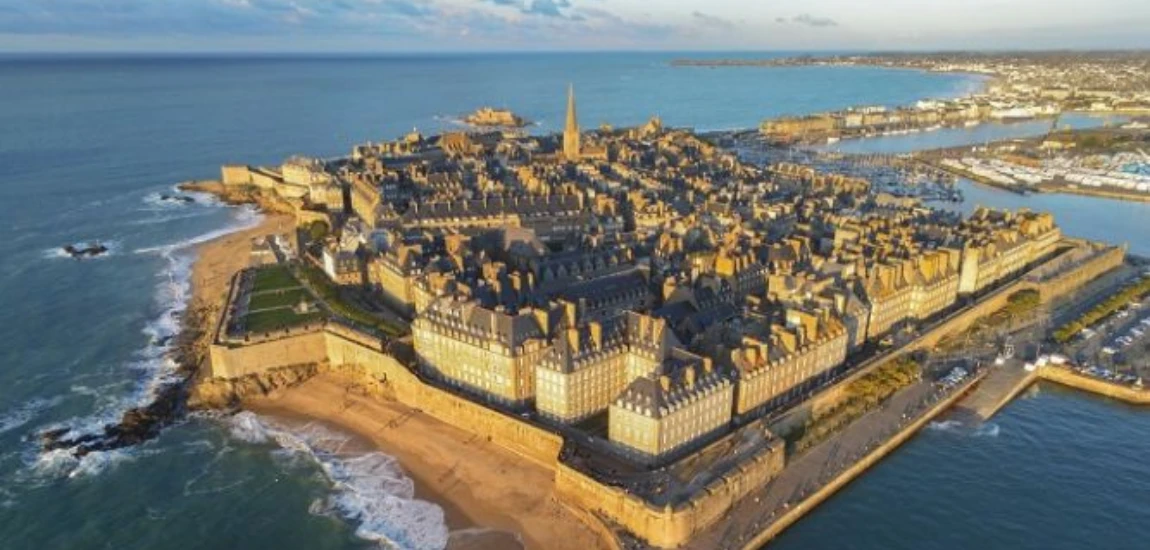

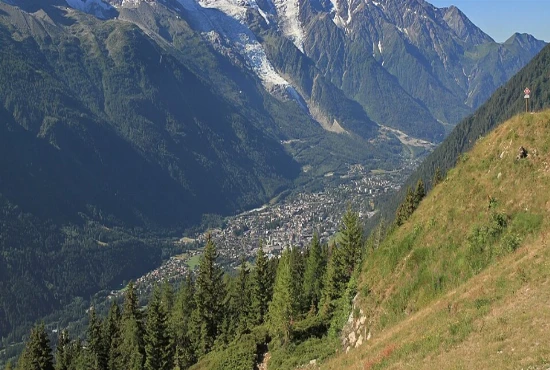
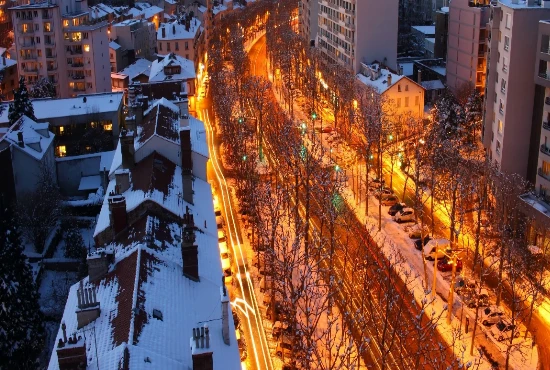

Leave a Reply